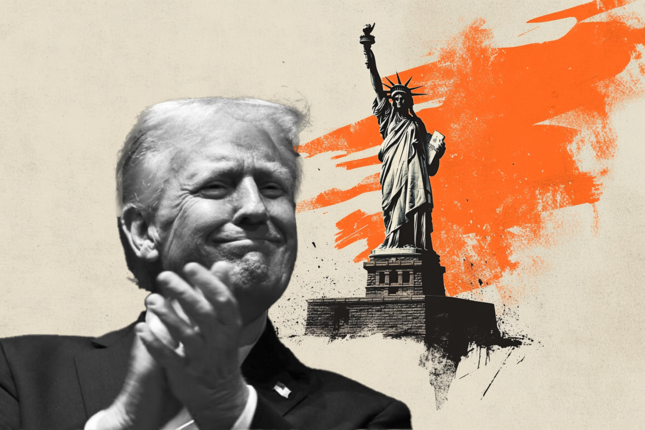The European Central Bank looks set to cut interest rates again at next week's meeting. But the more exciting debate will be on what's next.
Since the ECB’s January meeting, macroeconomic data indicate a potential bottoming out of the eurozone economy. Revised GDP data revealed that the economy narrowly avoided contraction in the final quarter of 2024. Confidence indicators for January and February showed some improvement, primarily in the industrial sector, which moved from very weak to still weak. Inflation has not worsened further but remains high. Inflation expectations in the industry have risen in recent months and in services remain above historical averages.
In the latest macro projections, we expect the ECB to maintain its inflation forecasts but lower its GDP growth projections for this year. In December, ECB staff projected GDP growth at 1.1% for 2025 and 1.4% for 2026, with inflation at 2.1% in 2025 and 1.9% in 2026. Key aspects to watch in the forecasts include the general inflation outlook and whether the ECB acknowledges the structural weaknesses of the eurozone economy or continues to delay recovery expectations.
25bp rate cut next week
Given the current macroeconomic backdrop, a rate cut on 6 March is likely. The ECB still views interest rates as restrictive. Despite recent debates among ECB officials about halting the rate cut cycle, this pause is not expected next week. The ECB uses market interest rates in its macro projections and must deliver the expected rate cuts to achieve the projected GDP growth and inflation outcomes. Otherwise, inflation would fall short. Additionally, the ECB’s balance sheet has decreased by almost 30% over the past two years, adding to the restrictiveness of monetary policy. This restrictiveness is what the ECB aims to alleviate, supporting a majority for cutting rates next week.
Looking beyond the March meeting
After another 25 basis point rate cut next week, the main question is how much further the ECB will go. At 2.5%, the policy rate would be at the upper end of the neutral interest rate range. More hawkish ECB officials, like Isabel Schnabel, have started to push back against additional rate cuts. The critical communication to watch next week is whether the ECB drops the “restrictive” label from its official stance. If it does, a pause in the rate cut cycle could become an option. If not, the current pace of rate cuts will continue.
The ECB is likely to avoid giving any forward guidance due to the high level of uncertainty. Macro indicators can quickly become outdated with the currently very fast-paced and sometimes erratic political environment. For example, US tariffs on European goods or a peace agreement in Ukraine could significantly impact the eurozone economy in both directions, good and bad. The ECB’s best approach therefore is to run on sight.
Eventually, we think that the structural weakness of the eurozone economy as well as looming tariffs and lower inflationary pressure on the back of a turning labour market will force the ECB to bring rates down to at least 2%, even if not all ECB members might like it.
Read the original analysis: Another ECB rate cut and then what?
Content disclaimer: This publication has been prepared by ING solely for information purposes irrespective of a particular user's means, financial situation or investment objectives. The information does not constitute investment recommendation, and nor is it investment, legal or tax advice or an offer or solicitation to purchase or sell any financial instrument. Read more here: https://think.ing.com/content-disclaimer/
Recommended Content
Editors’ Picks

EUR/USD advances to multi-day highs around 1.0860
EUR/USD is surging ahead, rapidly recovering and approaching multi-day highs around 1.0860. This boost comes on the heels of news that the EU might roll out countermeasures to soften the blow of Trump’s impending reciprocal tariffs.

GBP/USD flirts with tops near 1.2970 ahead of Trump's tariffs
GBP/USD is accelerating, challenging weekly highs near 1.2970 as a renewed, sharp drop in the Greenback sets the stage for the US 'reciprocal tariffs' announcement on "Liberation Day" at 20:00 GMT.

Gold looks consolidative near $3,120 ahead of Trump's “Liberation Day”
Gold is regaining momentum, climbing above $3,120 after a slight pullback from Tuesday’s near-record high of $3,150. Retreating US yields are bolstering XAU/USD, ahead of President Trump's official announcement of the reciprocal tariff measures later this Wednesday.

Trump Tariffs: Everything you need to know on “Liberation Day” Premium
The global trading system is about to be upended, but to what extent? Will markets have clarity or is it merely another phase in ongoing trade wars? Some answers are due on Wednesday at 20:00 GMT. Here is preview of the five critical things to watch.

Is the US economy headed for a recession?
Leading economists say a recession is more likely than originally expected. With new tariffs set to be launched on April 2, investors and economists are growing more concerned about an economic slowdown or recession.

The Best brokers to trade EUR/USD
SPONSORED Discover the top brokers for trading EUR/USD in 2025. Our list features brokers with competitive spreads, fast execution, and powerful platforms. Whether you're a beginner or an expert, find the right partner to navigate the dynamic Forex market.